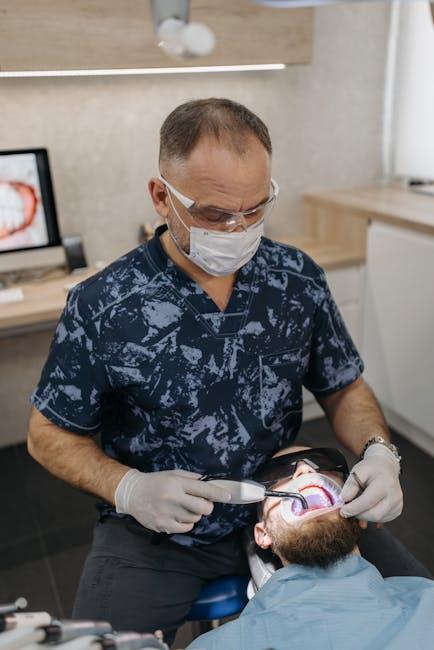
New Report: 72 Million Adults in the US Lack Dental Insurance, Nearly Three Times the Number Without Health Insurance
A new comprehensive report published by New Castle News sheds light on a critical yet often overlooked aspect of healthcare in America: dental insurance coverage. According to the findings, approximately 72 million adults in the United States currently lack dental insurance, a figure that is nearly three times higher than the number of adults without any health insurance at all. This alarming disparity raises crucial questions about the accessibility and affordability of dental care, and its implications on overall health.
Understanding the Dental Insurance Gap in the US
While health insurance has been a central focus of public policy and media coverage, dental insurance often takes a backseat despite its fundamental role in preventative and restorative health. The report’s numbers reveal that dental coverage is a significant gap in America’s healthcare system:
- 72 million adults
- Only about 25 million adults are uninsured for health coverage.
- Dental insurance is commonly excluded from many employer-sponsored health plans.
This gap indicates systemic challenges regarding how dental benefits are structured, offered, and utilized nationwide.
Why is Dental Insurance Coverage So Low?
Several factors contribute to the disproportionately high lack of dental insurance across the US adult population:
1. Separate Coverage from Medical Insurance
Unlike health insurance, dental benefits are often purchased separately or as add-ons, making it less common to have integrated coverage.
2. Cost and Affordability Issues
Employers may exclude dental coverage to reduce premiums, and individual dental insurance plans can be costly relative to the expected use.
3. Public Insurance Limitations
Programs like Medicaid provide limited dental benefits for adults, depending on the state, resulting in many low-income adults lacking coverage.
4. Lack of Awareness and Utilization
Many adults underestimate the importance of dental insurance or delay seeking dental care due to cost concerns, which perpetuates the problem.
The Impact of Lacking Dental Insurance on Adults in the US
The absence of dental insurance affects access to necessary dental care—and not just in terms of oral health but broader health outcomes as well. Here are some of the key impacts highlighted in the report:
- Delayed Care: Adults without dental coverage often postpone routine checkups and treatments, leading to avoidable oral health problems.
- Financial Burden: Out-of-pocket expenses for dental care can be prohibitively expensive, sometimes causing significant financial stress or medical debt.
- Overall Health Risks: Poor dental health has been linked to systemic conditions like heart disease, diabetes, and respiratory infections.
- Mental and Social Effects: Dental problems affect confidence, employability, and quality of life.
Dental Insurance vs. Health Insurance: A Comparative Overview
| Aspect | Dental Insurance | Health Insurance |
|---|---|---|
| Coverage Type | Focus on oral care: checkups, cleanings, fillings, extractions | Broad medical coverage: doctor visits, hospital stays, prescriptions |
| Enrollment | Usually voluntary or separate plan not included in major health plans | Often mandatory or employer-provided as a primary benefit |
| Cost | Lower monthly premiums but higher out-of-pocket for major procedures | Higher premiums, more extensive coverage for emergencies and chronic conditions |
| Public Programs | Limited adult coverage in Medicaid, more robust for children | Expanded coverage via Medicaid, Medicare, and ACA marketplace |
Benefits of Having Dental Insurance
Despite the challenges surrounding dental insurance, having coverage offers significant advantages that can improve oral and overall health, including:
- Preventive Care: Regular checkups and cleanings reduce the risk of cavities and gum disease.
- Early Detection: Identifying dental problems early can prevent costly and invasive procedures.
- Financial Protection: Coverage helps spread the expense of dental care and reduces the risk of unexpected bills.
- Access to Better Providers: Insurance networks offer access to vetted, trusted dental professionals.
Practical Tips to Secure Dental Coverage and Maintain Oral Health
For adults currently uninsured for dental care, here are some actionable steps to mitigate risk and improve oral health:
- Check with Your Employer: Verify if dental insurance is offered as a separate benefit or voluntary plan option.
- Consider Individual Plans: Explore marketplace dental insurance or dental discount plans if employer coverage is unavailable.
- Utilize Community Clinics: Seek low-cost dental services through community health centers or dental schools.
- Maintain Good Oral Hygiene: Brush twice daily, floss regularly, and avoid tobacco use.
- Schedule Regular Checkups: Even without insurance, early treatment prevents worsening conditions.
Case Study: Jessica’s Journey to Affordable Dental Care
Jessica, a 34-year-old freelance graphic designer from Ohio, faced a common dilemma: lacking dental insurance after losing her employer-sponsored coverage. She initially avoided dental visits due to cost concerns, resulting in severe tooth decay requiring expensive treatment.
Determined to manage costs better, Jessica researched and enrolled in an individual dental insurance plan and found a nearby community clinic offering affordable care. Over the next year, she received regular cleanings and completed her necessary treatments, all while managing expenses effectively.
Jessica’s experience underscores the importance of accessible dental insurance options and highlights practical strategies for the uninsured population.
Conclusion
The new report from New Castle News provides a stark reminder that dental insurance remains a significant healthcare blind spot for millions of adults in the United States. With 72 million adults lacking dental coverage—nearly triple the number uninsured for health insurance—addressing this gap is critical for enhancing public health and reducing financial burdens associated with dental care.
Improving awareness, expanding affordable coverage options, and encouraging regular dental care are essential steps toward bridging this divide. Whether through employer plans, individual coverage, or community resources, adults can take vital actions to protect their oral health and overall well-being.
For readers looking to better understand their options or prioritize dental health, staying informed and proactive is key. After all, a healthy smile is not just about appearance—it’s a cornerstone of lifelong health.


